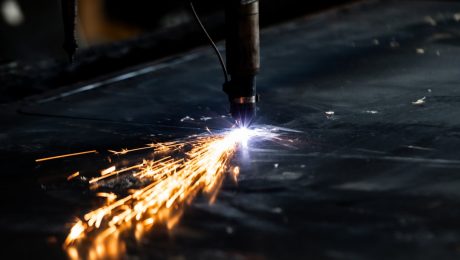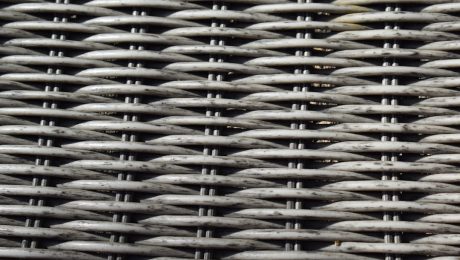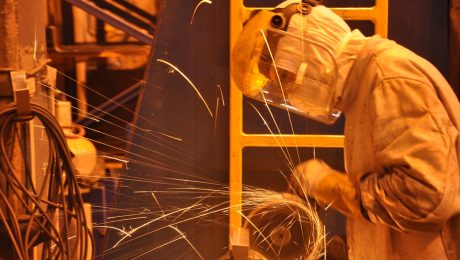The steel industry is a behemoth, demanding efficient and cost-effective logistics to move massive quantities of raw materials and finished products. From the blast furnace to the construction site, optimizing the delivery process is crucial for profitability and competitiveness. This post delves into the key strategies for achieving peak efficiency in steel logistics.
1. Route Optimization: The Steel Mile’s Best Friend
Route optimization is arguably the most impactful aspect of steel delivery logistics. Traditional methods often rely on simple, static routes, leading to wasted fuel, increased delivery times, and higher transportation costs. Advanced route planning software leverages real-time data, including traffic conditions, weather forecasts, and delivery deadlines, to dynamically adjust routes. This dynamic approach considers factors like weight restrictions on certain roads, bridge clearances for oversized loads, and even the driver’s hours of service regulations. By implementing sophisticated algorithms, businesses can significantly reduce mileage, minimize fuel consumption, and ensure timely deliveries, ultimately boosting profitability and customer satisfaction.
Furthermore, incorporating features like last-mile optimization becomes particularly crucial in steel delivery, as the final leg often involves navigating complex urban environments. Software that considers factors like narrow streets, construction zones, and delivery windows ensures efficient and safe delivery to the customer’s exact location.
2. Inventory Management: A Balancing Act of Supply and Demand
Effective inventory management is the cornerstone of efficient steel delivery. Holding excessive stock ties up capital and increases storage costs, while insufficient stock leads to delays and lost sales. Implementing a robust inventory management system (IMS) allows for precise tracking of steel products throughout the supply chain. This system should incorporate real-time data on stock levels, demand forecasts, and order fulfillment. By leveraging data analytics, businesses can anticipate demand fluctuations, optimize stock levels, and avoid costly stockouts or overstocking. This reduces warehousing costs, minimizes waste from obsolescence, and ensures that the right amount of steel is available when and where it’s needed.
Advanced IMS systems can also integrate with transportation management systems (TMS) to streamline the entire process. This integration allows for automatic triggering of shipments based on inventory levels, ensuring timely delivery and minimizing delays.
3. Transportation Management Systems (TMS): Streamlining the Steel Flow
A robust TMS is the central nervous system of efficient steel delivery. It provides a centralized platform for managing all aspects of transportation, from planning and scheduling to execution and monitoring. A good TMS offers features such as: shipment tracking, carrier selection, freight cost optimization, and real-time visibility into the entire delivery process. This allows businesses to monitor the location and status of shipments, identify potential delays, and proactively address any issues. Moreover, TMS facilitates communication between various stakeholders, including suppliers, carriers, and customers, ensuring everyone is informed and aligned.
By automating many manual tasks associated with transportation, a TMS frees up valuable time and resources, allowing logistics teams to focus on strategic decision-making and continuous improvement.
4. Leveraging Technology: From GPS Tracking to Predictive Analytics
Technology plays a crucial role in optimizing steel delivery. GPS tracking provides real-time location data for vehicles, enabling proactive management of shipments and immediate response to unforeseen events. Predictive analytics, based on historical data and machine learning, can forecast demand, optimize inventory levels, and even predict potential transportation delays. This allows businesses to make informed decisions, minimizing risks and maximizing efficiency.
Furthermore, the use of telematics, which collects data from vehicles, can provide insights into driver behavior, fuel consumption, and vehicle maintenance needs. This data can be used to improve driver training, reduce fuel costs, and prevent costly breakdowns.
5. Collaboration and Communication: The Foundation of Success
Effective collaboration and communication are essential for success in steel delivery logistics. Open communication between all stakeholders – suppliers, carriers, customers, and internal teams – ensures everyone is aligned and informed. This includes sharing real-time data, updates on shipment status, and any potential challenges. A collaborative approach fosters trust and transparency, leading to smoother operations and improved customer relationships.
Implementing a centralized communication platform, such as a collaborative software or project management tool, can streamline communication and ensure everyone has access to the latest information. Regular meetings and feedback sessions can further enhance collaboration and identify areas for improvement.
By implementing these strategies, steel companies can significantly reduce costs, improve delivery times, enhance customer satisfaction, and gain a competitive edge in a demanding market. The journey to optimized steel delivery is ongoing, but embracing technology and fostering collaboration are key to achieving lasting success.
SEO Tags:
- Steel Delivery Logistics
- Steel Supply Chain Optimization
- Route Optimization Steel
- Steel Inventory Management
- Transportation Management Steel
body {
font-family: sans-serif;
line-height: 1.6;
}
h1, h2, h3 {
color: #333;
}
h1 {
font-size: 2.5em;
}
h2 {
font-size: 2em;
}
h3 {
font-size: 1.5em;
}
The steel industry operates on a foundation of rigorous standards, ensuring the quality, safety, and reliability of its products. At the heart of this system lies ASTM International (formerly known as the American Society for Testing and Materials), a globally recognized organization that develops and publishes voluntary consensus standards for materials, products, systems, and services. Compliance with ASTM standards is paramount for steel producers seeking to maintain credibility, meet customer expectations, and avoid potential liabilities. This comprehensive guide delves into the crucial aspects of ASTM compliance in steel production.
Understanding ASTM Standards for Steel
ASTM International offers a vast library of standards specifically addressing steel production. These standards encompass various aspects, from the chemical composition and mechanical properties of different steel grades to the testing methods used to verify compliance. Key standards frequently referenced include those defining tensile strength, yield strength, elongation, hardness, impact resistance, and chemical analysis. For example, ASTM A36 covers structural steel, while ASTM A572 outlines high-strength low-alloy structural steel. Understanding the specific ASTM standard applicable to a particular steel grade is fundamental to ensuring compliance.
Navigating the multitude of ASTM standards can be challenging. Steel producers often rely on internal experts and external consultants to interpret and implement the relevant standards effectively. Staying updated on revisions and new standards is crucial, as these updates often reflect advancements in technology and safety considerations.
Essential Testing Methods and Procedures
ASTM standards don’t merely define properties; they also outline the precise testing methods used to determine if a particular steel grade meets the specified requirements. These methods are rigorously detailed, ensuring consistency and comparability of results across different laboratories and manufacturers. Common tests include:
- Tensile testing: Determines ultimate tensile strength, yield strength, and elongation.
- Hardness testing: Measures the resistance of the steel to indentation, often using Rockwell or Brinell scales.
- Impact testing: Evaluates the steel’s ability to absorb energy under impact, typically using Charpy or Izod tests.
- Chemical analysis: Determines the precise chemical composition of the steel, ensuring it conforms to the specified grade.
- Bend testing: Assesses the ductility and formability of the steel.
Accurate and reliable testing is crucial for demonstrating ASTM compliance. Laboratories must be properly equipped, calibrated, and staffed by competent personnel. Regular audits and quality control measures are essential to maintain the integrity of the testing process.
Implementing Robust Quality Control Measures
ASTM compliance is not a one-time event; it requires a comprehensive and ongoing commitment to quality control throughout the entire steel production process. From raw material inspection to finished product testing, every stage must adhere to strict protocols. This includes:
- Raw material verification: Ensuring that the incoming raw materials meet the required specifications.
- Process monitoring: Continuously monitoring the various stages of steel production to identify and correct any deviations from the established parameters.
- In-process testing: Conducting tests at various stages of production to detect potential problems early on.
- Statistical process control (SPC): Employing statistical methods to monitor and control the production process, minimizing variability and ensuring consistency.
- Corrective and preventive actions (CAPA): Implementing a system for identifying, investigating, and rectifying any non-conformances.
A robust quality control system is essential for preventing defects and ensuring that the final product consistently meets ASTM standards.
Certification and Accreditation: Proving Compliance
Demonstrating ASTM compliance often involves obtaining certifications and accreditations from independent third-party organizations. These organizations verify that a steel producer’s processes and products meet the specified standards. Certification provides assurance to customers and regulatory bodies that the steel is of high quality and meets the required specifications. This can be a significant advantage in competitive markets and is often a requirement for specific projects or applications.
Accreditation of testing laboratories is equally crucial. Accredited laboratories adhere to rigorous standards, ensuring the reliability and validity of their testing results. Customers can have confidence in the data generated by accredited laboratories, which strengthens the credibility of the ASTM compliance claims.
The Importance of Adherence to ASTM Standards
Adherence to ASTM standards is not merely a matter of compliance; it’s a commitment to safety, quality, and reliability. Failure to comply can lead to several serious consequences:
- Product failure: Non-compliant steel may fail under stress, leading to structural damage, accidents, and injuries.
- Reputational damage: Failure to meet ASTM standards can severely damage a company’s reputation and erode customer trust.
- Legal liabilities: Non-compliance can result in legal action and significant financial penalties.
- Market access restrictions: Many countries and jurisdictions require ASTM compliance for certain steel products, limiting market access for non-compliant producers.
By prioritizing ASTM compliance, steel producers demonstrate their dedication to producing high-quality, safe, and reliable products, ensuring the continued success of their businesses and contributing to the safety and integrity of numerous structures and applications.
Tags: ASTM Steel, Steel Standards, Steel Compliance, Quality Control Steel, Steel Testing
Superalloy steels are a class of high-performance materials renowned for their exceptional strength, resistance to high temperatures, and excellent corrosion resistance. These remarkable properties make them indispensable in a wide range of demanding applications, pushing the boundaries of engineering and technology. This blog post delves into the fascinating world of superalloy steels, exploring their key characteristics and diverse applications across various industries.
1. Aerospace: Reaching for the Skies with Superalloy Strength
The aerospace industry is arguably the most significant user of superalloys. The extreme conditions encountered during flight – high temperatures from friction and combustion, intense pressures, and corrosive environments – demand materials that can withstand immense stress. Superalloys, particularly nickel-based superalloys, are perfectly suited for these challenges. They form the critical components of gas turbine engines, including turbine blades, vanes, and combustor liners. These components operate at temperatures exceeding 1000°C (1832°F), requiring materials with exceptional creep resistance (resistance to deformation under sustained stress) and fatigue strength (resistance to failure under repeated stress). The superior performance of superalloys allows for increased engine efficiency, higher thrust, and reduced fuel consumption, leading to significant advancements in aircraft design and performance.
2. Energy Sector: Powering the Future with Superalloy Resilience
The energy sector, encompassing power generation and oil and gas extraction, relies heavily on superalloys for their ability to withstand harsh operating conditions. In power plants, superalloys are crucial components of gas turbines used for electricity generation. Their high-temperature strength and corrosion resistance ensure prolonged operational life and efficient energy conversion. Furthermore, superalloys are used in the construction of components for oil and gas extraction, such as downhole tools and piping systems, which operate under high pressure and temperature conditions. The ability of superalloys to withstand these extreme conditions ensures the safe and efficient extraction of valuable resources.
3. Chemical Processing: Withstanding Corrosive Environments
The chemical processing industry deals with highly corrosive substances and demanding temperatures. Superalloys, particularly those with enhanced corrosion resistance, play a crucial role in handling these challenging conditions. They are used in the construction of reactors, pumps, valves, and other components that come into contact with aggressive chemicals. The superior resistance to oxidation, sulfidation, and other forms of corrosion ensures the longevity and reliability of these components, minimizing downtime and maximizing productivity. Specific alloy compositions are tailored to meet the unique demands of different chemical processes.
4. Automotive Industry: Enhancing Performance and Efficiency
While not as prevalent as in aerospace or energy, superalloys are finding increasing applications in the automotive industry, particularly in high-performance vehicles. Their use in turbocharger components, exhaust systems, and other high-temperature applications enhances engine efficiency and performance. The lighter weight of some superalloys compared to traditional materials also contributes to improved fuel economy. As the demand for more efficient and powerful engines grows, the use of superalloys in the automotive sector is expected to increase.
5. Medical Implants: Biocompatibility and Strength in a Delicate Balance
Surprisingly, superalloys also find application in the medical field. Certain nickel-based superalloys exhibit excellent biocompatibility, making them suitable for use in medical implants. Their high strength and corrosion resistance are essential for the long-term functionality and reliability of these implants. However, careful selection of alloy composition is crucial to minimize the risk of adverse reactions. Research continues to explore the potential of superalloys in developing advanced medical implants with enhanced performance and biocompatibility.
In conclusion, superalloy steels are high-performance materials with a wide range of applications across diverse industries. Their unique combination of strength, high-temperature resistance, and corrosion resistance makes them indispensable in demanding environments. As technology advances, the development of new superalloy compositions and processing techniques promises to further expand their applications and enhance their performance, driving innovation and progress across various sectors.
SEO-Friendly Tags:
- Superalloy Steel
- High Temperature Alloys
- Aerospace Materials
- Nickel-Based Superalloys
- Energy Applications
The world of civil engineering relies heavily on steel’s strength and versatility. From skyscrapers piercing the clouds to robust bridges spanning vast distances, steel structures are ubiquitous. For civil engineers, a thorough understanding of steel design, analysis, and construction is paramount. This comprehensive guide explores the essential training aspects every civil engineer should master to excel in this critical field.
Understanding Steel Design Principles
Steel design isn’t simply about choosing the right size beam; it’s a complex interplay of material properties, load calculations, and code compliance. Training in this area should cover fundamental concepts like:
- Material Properties: Understanding the yield strength, tensile strength, and ductility of various steel grades is crucial. Training should delve into the differences between different steel grades and their suitability for specific applications.
- Load Calculations: Accurately determining dead loads, live loads, wind loads, and seismic loads is essential for safe and efficient design. This includes learning to use relevant codes and standards (like AISC in the US or Eurocodes in Europe) to perform these calculations.
- Limit State Design: Modern steel design predominantly employs limit state design, focusing on preventing both ultimate and serviceability limit states. Training should cover the principles of ultimate limit state (collapse) and serviceability limit states (deflection, vibration).
- Stability and Buckling: Understanding the phenomenon of buckling in slender steel members is vital. Training should cover methods for assessing and preventing buckling, including the use of bracing and lateral supports.
Mastering Steel Detailing and Drafting
Even the most brilliant design is useless without accurate and detailed drawings. Effective steel detailing involves creating precise shop drawings that communicate the design intent to fabricators. Essential training includes:
- CAD Software Proficiency: Proficiency in industry-standard CAD software like AutoCAD, Tekla Structures, or Revit is non-negotiable. Training should focus on creating detailed drawings, including member sizes, connection details, and fabrication marks.
- Connection Design: Steel connections are critical for transferring loads between members. Training should cover various connection types (bolted, welded, etc.), their design principles, and their capacity calculations.
- Shop Drawing Review: After the drawings are created, they need to be thoroughly reviewed to ensure accuracy and compliance with design specifications. Training in this area is crucial to avoid costly errors in fabrication.
- Industry Standards and Codes: Adherence to industry standards and codes is paramount. Training should cover the relevant codes and standards for steel detailing and ensure compliance with them.
Advanced Steel Analysis Techniques
Beyond basic hand calculations, advanced analysis techniques are often necessary for complex steel structures. Training in this area should encompass:
- Finite Element Analysis (FEA): FEA software allows for detailed analysis of complex structural behavior. Training should cover the principles of FEA and its application to steel structures.
- Nonlinear Analysis: For structures subjected to significant deformations or inelastic behavior, nonlinear analysis is necessary. Training should cover the concepts and applications of nonlinear analysis in steel design.
- Seismic Analysis: In seismic zones, proper seismic analysis is crucial. Training should cover the principles of seismic design and analysis for steel structures.
- Software Application: Hands-on experience using specialized software for steel analysis is essential. Training should provide ample opportunity to utilize such software.
Understanding Steel Connections and Fabrication
The success of a steel structure hinges on the proper design and fabrication of its connections. Training in this area should cover:
- Types of Connections: A comprehensive understanding of various connection types, including bolted, welded, and composite connections, is vital. Training should cover the strengths and weaknesses of each type.
- Connection Design Principles: The design of connections must ensure sufficient strength and stiffness to transfer loads effectively. Training should cover the principles of connection design and the use of relevant design codes.
- Welding Processes: For welded connections, a basic understanding of welding processes and quality control is crucial. Training might involve a brief overview of common welding techniques and quality assurance procedures.
- Bolt Types and Specifications: The selection of appropriate bolts based on strength, type, and application is essential. Training should cover various bolt types and their specifications.
Utilizing Steel Design Software
Modern steel design relies heavily on specialized software. Training should focus on:
- Software Selection: Choosing the right software for the task is crucial. Training should cover the features and capabilities of various steel design software packages.
- Model Creation: Creating accurate and efficient models is paramount. Training should cover best practices for model creation and verification.
- Analysis and Design: Utilizing software for analysis and design is a key skill. Training should focus on applying software effectively for various design scenarios.
- Report Generation: Generating clear and concise reports is essential for communication and documentation. Training should cover the use of software to generate professional reports.
In conclusion, comprehensive steel training is essential for any civil engineer aiming for success in this demanding field. By mastering the principles outlined above, engineers can design, analyze, and construct safe, efficient, and innovative steel structures.
Tags: Steel Design, Steel Structures, Civil Engineering, Steel Detailing, Steel Analysis, Finite Element Analysis, Steel Connections
In a world increasingly conscious of hygiene and infection control, the development of antibacterial surfaces represents a significant leap forward. Among these advancements, antibacterial steel, specifically stainless steel infused with antimicrobial properties, is emerging as a powerful tool in the fight against harmful bacteria. This post delves into the science, applications, and future of this innovative material.
Understanding Antibacterial Steel: How it Works
Antibacterial steel isn’t simply regular stainless steel. Its antimicrobial properties are achieved through various methods, primarily by incorporating antimicrobial agents into the steel’s composition during the manufacturing process. These agents can be metallic ions (like silver or copper), or other compounds that disrupt the bacterial cell membrane or interfere with their metabolic processes, effectively inhibiting their growth and killing them. The specific mechanism depends on the type of antimicrobial agent used. For example, silver ions are known for their broad-spectrum antimicrobial activity, effectively targeting a wide range of bacteria, fungi, and viruses. The antimicrobial effect is typically long-lasting, integrated into the steel itself rather than being a surface coating that can wear off over time. This inherent antimicrobial property makes it a durable and effective solution for maintaining hygiene.
Applications of Antibacterial Steel: Where it Shines
The versatility of antibacterial steel makes it suitable for a wide array of applications where hygiene is paramount. In healthcare settings, it can be used for countertops, sinks, medical equipment, and handrails, minimizing the risk of hospital-acquired infections (HAIs). The food industry benefits greatly from its use in food preparation areas, reducing the spread of foodborne illnesses. Public spaces like airports, train stations, and shopping malls can utilize antibacterial steel in high-touch areas like handrails, door handles, and elevator buttons to improve overall hygiene and reduce the transmission of pathogens. Even in residential settings, antibacterial steel can be incorporated into kitchen countertops and bathroom fixtures for enhanced cleanliness.
Effectiveness of Antibacterial Steel: Scientific Evidence
Numerous studies have demonstrated the effectiveness of antibacterial steel in reducing bacterial contamination. Independent laboratory tests consistently show significant reductions in bacterial counts on antibacterial steel surfaces compared to regular stainless steel. The extent of the reduction varies depending on the specific antimicrobial agent used and the type of bacteria tested. However, the overall trend points towards a substantial improvement in hygiene and infection control. While these laboratory tests provide valuable data, real-world applications also showcase its effectiveness. Studies in healthcare settings have shown a correlation between the use of antibacterial steel and a decrease in the incidence of HAIs. This data underscores the importance of antibacterial steel as a valuable tool in infection prevention.
Limitations of Antibacterial Steel: Addressing the Challenges
While antibacterial steel offers significant advantages, it’s not a panacea. One limitation is the potential for the development of antibiotic resistance. While less common than with conventional antibiotics, prolonged exposure to antimicrobial agents could theoretically lead to the emergence of resistant strains. However, the broad-spectrum activity of many antimicrobial agents used in antibacterial steel helps mitigate this risk. Another consideration is the initial cost. Antibacterial steel is typically more expensive than regular stainless steel due to the added manufacturing processes. However, the long-term benefits in terms of reduced cleaning costs, improved hygiene, and decreased infection rates can often outweigh the initial investment. Finally, the effectiveness of antibacterial steel can be influenced by factors like surface cleanliness and the concentration of antimicrobial agents within the steel.
Future Innovations in Antibacterial Steel: Looking Ahead
Research and development in antibacterial steel continue to advance. Scientists are exploring new antimicrobial agents with enhanced effectiveness and broader antimicrobial spectrums. Nanotechnology is also playing a role, with researchers investigating the use of nanoparticles to enhance the antimicrobial properties of steel. Furthermore, efforts are focused on developing more sustainable and environmentally friendly methods of producing antibacterial steel, minimizing the environmental impact of manufacturing processes. The integration of smart sensors into antibacterial steel surfaces is another exciting area of development. These sensors could monitor bacterial growth in real-time, providing valuable data for optimizing cleaning protocols and preventing outbreaks.
In conclusion, antibacterial steel represents a significant advancement in hygiene and infection control. Its diverse applications, proven effectiveness, and ongoing research make it a valuable tool in various settings. While limitations exist, the benefits of this technology far outweigh the challenges, making it a key player in shaping a cleaner and healthier future.
SEO Tags:
- Antibacterial Steel
- Antimicrobial Stainless Steel
- Hygiene Solutions
- Infection Control
- Stainless Steel Applications
body { font-family: sans-serif; line-height: 1.6; }
h1, h2, h3 { color: #333; }
h1 { font-size: 2.5em; }
h2 { font-size: 2em; }
h3 { font-size: 1.5em; }
Cogeneration systems, also known as combined heat and power (CHP) systems, are increasingly vital for efficient energy production. These systems simultaneously generate electricity and useful heat, maximizing energy utilization and minimizing waste. While the overall system design is complex, a crucial, often overlooked component is the steel used in its construction. The selection of appropriate steel grades is paramount for ensuring the system’s longevity, safety, and efficient operation. This post delves into the critical role of steel in cogeneration systems.
Choosing the Right Steel Grade for Cogeneration
The steel used in cogeneration systems must withstand demanding conditions, including high temperatures, pressures, and potentially corrosive environments. The choice of steel grade depends on several factors: the specific application within the system (e.g., boiler components, piping, pressure vessels), the operating temperature and pressure, and the presence of corrosive agents like steam or flue gases. Commonly used steel grades include:
- Carbon Steels: Relatively inexpensive and readily available, carbon steels are suitable for lower-temperature applications and components not directly exposed to highly corrosive environments. However, their high-temperature strength and corrosion resistance are limited.
- Low Alloy Steels: Offer improved strength and creep resistance at elevated temperatures compared to carbon steels. They are often used in boiler components and high-pressure piping.
- Stainless Steels: Excellent corrosion resistance makes stainless steels ideal for components exposed to steam, flue gases, or other corrosive substances. Different grades (e.g., 304, 316, 310) offer varying degrees of corrosion resistance and high-temperature strength.
- Heat-Resistant Steels: Specifically designed for high-temperature applications, these steels exhibit exceptional creep resistance and oxidation resistance. They are crucial for components operating at temperatures exceeding 500°C (932°F).
Careful material selection based on specific operating parameters is crucial for preventing premature failure and ensuring the system’s safety and efficiency.
Corrosion Resistance in Cogeneration System Steel
Corrosion is a significant concern in cogeneration systems, particularly in components exposed to moisture, steam, and flue gases containing corrosive compounds like sulfur dioxide. The selection of corrosion-resistant steel is essential for preventing degradation and extending the lifespan of the system. Stainless steels, with their inherent chromium content, offer superior corrosion resistance. However, the specific grade chosen depends on the severity of the corrosive environment. For instance, 316 stainless steel, with its added molybdenum content, provides enhanced resistance to chloride ion corrosion, which is often present in coastal areas or industrial settings.
Protective coatings, such as paint or specialized linings, can further enhance corrosion resistance, especially for carbon and low alloy steels operating in harsh environments. Regular inspection and maintenance are also vital for early detection and mitigation of corrosion.
High-Temperature Strength and Creep Resistance
Cogeneration systems operate at elevated temperatures, subjecting steel components to significant thermal stresses. Creep, the gradual deformation of a material under sustained stress at high temperatures, is a major concern. The steel chosen must exhibit sufficient high-temperature strength and creep resistance to maintain structural integrity and prevent failures. Heat-resistant steels and specific grades of low alloy and stainless steels are designed to withstand these demanding conditions. Careful consideration of the operating temperature and pressure is critical in selecting a steel grade with adequate creep resistance.
Regular monitoring of component temperatures and stresses, alongside appropriate safety margins in design, are essential for preventing creep-related failures.
Manufacturing Considerations and Weldability
The manufacturing process of cogeneration system components significantly impacts the final product’s quality and performance. The chosen steel grade must be readily weldable to facilitate the fabrication of complex components. Some steel grades may require specialized welding techniques or pre- and post-weld heat treatments to ensure the weld’s integrity and prevent cracking or other defects. The manufacturing process should also adhere to strict quality control measures to guarantee the structural soundness and durability of the components.
The fabrication process should also consider the potential for residual stresses introduced during welding. These stresses can impact the component’s lifespan and should be carefully managed through appropriate techniques.
Cost-Effectiveness of Steel Selection in Cogeneration
While selecting the most robust and corrosion-resistant steel is crucial, cost-effectiveness should also be considered. High-performance steels, such as heat-resistant alloys, are significantly more expensive than carbon steels. Therefore, a balance must be struck between material cost and the long-term operational costs associated with potential failures, maintenance, and system downtime. A life-cycle cost analysis can help in optimizing the steel selection, considering both initial investment and long-term operational expenses.
Careful evaluation of the operating conditions, potential risks, and the system’s lifespan allows for a cost-effective steel selection that ensures both system reliability and economic viability.
In conclusion, the selection of steel for cogeneration systems is a critical decision impacting the system’s efficiency, safety, and longevity. A thorough understanding of the operating conditions, material properties, and manufacturing considerations is essential for choosing the optimal steel grade. By carefully balancing performance requirements with cost-effectiveness, engineers can ensure the reliable and efficient operation of cogeneration systems for years to come.
SEO Tags:
- Cogeneration Steel
- Steel for CHP Systems
- High-Temperature Steel
- Corrosion Resistant Steel Cogeneration
- Combined Heat and Power Steel Selection
Steel bridges, symbols of engineering prowess and efficient transportation, stand as testaments to human ingenuity. Designing these structures is a complex process, demanding a deep understanding of structural mechanics, material science, and construction techniques. This comprehensive guide delves into the key aspects of steel bridge design, providing insights into the intricacies of this fascinating field.
1. Conceptual Design and Preliminary Analysis
The journey of a steel bridge begins with conceptual design. This phase involves defining the project’s objectives, including the bridge’s purpose, location, span length, and anticipated traffic load. Preliminary analysis considers various bridge types – like beam bridges, truss bridges, arch bridges, and suspension bridges – to determine the most suitable option based on factors such as span length, terrain, and aesthetics. Preliminary cost estimations are also conducted at this stage to assess the feasibility of the project. Site surveys, including soil investigations and hydrological studies, are crucial to understand the environmental context and potential challenges. The selection of the optimal bridge type heavily relies on the interaction between these factors and the overall project goals.
2. Load Calculations and Structural Analysis
Accurate load calculations are paramount in steel bridge design. This involves determining all forces acting on the structure, including dead loads (the weight of the bridge itself), live loads (traffic, pedestrians, and wind), and environmental loads (snow, ice, and seismic activity). Different design codes, such as AASHTO (American Association of State Highway and Transportation Officials) and Eurocode, provide guidelines for load calculations. Sophisticated structural analysis techniques, often employing Finite Element Analysis (FEA) software, are used to determine the stresses and deflections within the bridge components under various loading scenarios. FEA allows engineers to model the bridge’s behavior with high accuracy, optimizing the design for strength, stability, and serviceability.
3. Material Selection and Detailing
Steel’s high strength-to-weight ratio makes it ideal for bridge construction. However, selecting the appropriate steel grade is crucial. Factors such as yield strength, tensile strength, and weldability influence the choice. The design also specifies the required steel sections, including beams, columns, and plates. Detailed drawings are then prepared, outlining the precise dimensions, connections, and fabrication requirements. These drawings serve as the blueprint for the fabrication process. Careful consideration must be given to corrosion protection, with options including galvanizing, painting, and other protective coatings to ensure the longevity of the structure. The detailing phase ensures that the bridge can be efficiently and safely constructed.
4. Connection Design and Fabrication
Connections are critical elements in steel bridge design, transferring loads between different structural members. The design of connections must ensure sufficient strength and stiffness to withstand the anticipated loads. Common connection types include bolted connections, welded connections, and a combination of both. The selection of the connection type depends on several factors, including load magnitude, accessibility, and fabrication constraints. Finite element analysis is often employed to analyze the stress concentrations around connections, ensuring their integrity under various loading conditions. Detailed fabrication drawings, specifying welding procedures, bolt sizes, and tolerances, are essential for accurate construction.
5. Construction and Monitoring
The construction phase requires meticulous planning and execution. This involves coordinating the fabrication, transportation, and erection of the steel components. Specialized equipment, such as cranes and heavy-duty lifting gear, is usually required for the erection process. Quality control measures are implemented throughout the construction process to ensure compliance with the design specifications and safety regulations. Regular inspections are carried out to monitor the structural integrity of the bridge during and after construction. Post-construction monitoring may involve strain gauge measurements, visual inspections, and other techniques to detect any potential issues and ensure the bridge’s long-term performance. Proper maintenance and periodic inspections are crucial for ensuring the safety and longevity of the steel bridge.
Designing steel bridges is a multidisciplinary endeavor requiring collaboration between engineers, fabricators, and construction crews. By carefully considering each stage of the design process, from initial concepts to construction and monitoring, engineers can ensure the creation of safe, durable, and aesthetically pleasing structures that serve their intended purpose for decades to come.
SEO Tags:
- Steel Bridge Design
- Bridge Engineering
- Structural Steel Design
- Finite Element Analysis Bridges
- Steel Bridge Construction
Entering international markets is a significant step for any business. But before you can start selling your products abroad, you need to understand the crucial role of international product certifications. These certifications aren’t just bureaucratic hurdles; they’re essential for demonstrating product safety, quality, and compliance with local regulations, ultimately building trust with consumers and opening doors to new opportunities. This comprehensive guide will help you navigate the complexities of international product certifications.
Understanding the Importance of International Product Certifications
International product certifications are legally mandated or voluntarily adopted standards that verify your product meets specific safety, quality, and performance criteria in different countries or regions. These certifications demonstrate your commitment to consumer safety and environmental protection, building confidence amongst consumers and regulatory bodies. Without the necessary certifications, your products may be blocked at customs, face hefty fines, or even be banned from sale, leading to significant financial losses and reputational damage. Moreover, certifications can provide a competitive edge, making your products more attractive to buyers who value quality and assurance.
Key International Product Certification Standards
The landscape of international product certifications is vast and varies significantly depending on the product category, target market, and specific regulations. Some of the most prominent certifications include:
- CE Marking (European Union): Indicates conformity with health, safety, and environmental protection legislation within the European Economic Area. It’s crucial for a wide range of products sold in the EU.
- FCC Certification (United States): Ensures electronic products meet the Federal Communications Commission’s standards for radio frequency emissions and electromagnetic compatibility.
- UL Certification (United States and Canada): Demonstrates that a product has met Underwriters Laboratories’ safety standards, often required for electrical appliances and other potentially hazardous products.
- CSA Certification (Canada): Similar to UL, CSA Group provides independent testing and certification services to ensure product safety and compliance with Canadian standards.
- ISO 9001 (International): Focuses on quality management systems, demonstrating a company’s commitment to providing consistent, high-quality products and services. While not specific to a product, it’s a valuable certification for building trust.
- RoHS (Restriction of Hazardous Substances): Limits the use of certain hazardous materials in electrical and electronic equipment, promoting environmental protection.
- REACH (Registration, Evaluation, Authorisation and Restriction of Chemicals): An EU regulation concerning the registration, evaluation, authorization, and restriction of chemical substances.
This list is not exhaustive, and many other certifications exist, tailored to specific industries and regions (e.g., medical device certifications, automotive certifications).
Navigating the Certification Process: A Step-by-Step Guide
The process of obtaining international product certifications can be complex and time-consuming. It generally involves these steps:
- Identify Relevant Certifications: Research the specific certifications required for your product in your target markets. This often requires consulting government websites and industry-specific resources.
- Prepare Documentation: Gather all necessary technical documentation, including product specifications, design drawings, test reports, and manufacturing processes.
- Select a Certification Body: Choose a reputable and accredited certification body recognized in your target market. Different bodies specialize in different certifications.
- Testing and Evaluation: Your product will undergo rigorous testing to ensure it meets the specified standards. This may involve physical testing, documentation review, and factory inspections.
- Certification Issuance: Upon successful completion of the testing and evaluation, the certification body will issue the relevant certificate.
- Ongoing Compliance: Maintaining compliance is crucial. Regular audits and updates may be required to ensure your product continues to meet the standards.
The Benefits of Obtaining International Product Certifications
The benefits of obtaining international product certifications extend far beyond simply complying with regulations. They include:
- Increased Market Access: Certifications open doors to new markets, allowing you to sell your products in countries where specific certifications are mandatory.
- Enhanced Brand Reputation: Certifications build trust and credibility with consumers, showcasing your commitment to quality and safety.
- Competitive Advantage: Certified products often have a competitive edge over uncertified products, attracting customers who prioritize quality and assurance.
- Reduced Risks: Compliance with regulations minimizes the risk of legal issues, fines, product recalls, and reputational damage.
- Improved Efficiency: Streamlined processes and reduced delays at customs can lead to greater efficiency in your supply chain.
Cost and Time Considerations for International Certifications
Obtaining international product certifications involves significant costs and time investment. The costs vary greatly depending on the complexity of the product, the number of certifications required, and the chosen certification body. Factors influencing the timeline include the complexity of testing, the responsiveness of the certification body, and the volume of products needing certification. Thorough planning and budgeting are essential to manage these resources effectively. It’s advisable to factor in potential delays and unexpected expenses.
Navigating the world of international product certifications requires careful planning and attention to detail. By understanding the importance of these certifications, identifying the relevant standards, and following a structured approach, you can successfully unlock global markets and build a successful international business.
Tags: International Product Certification, Global Certification, CE Marking, FCC Certification, Product Compliance, Export Regulations, Import Regulations
body { font-family: sans-serif; line-height: 1.6; }
h1, h2, h3 { color: #333; }
img { max-width: 100%; height: auto; }
In today’s fast-paced world, efficiency and cost-effectiveness are paramount. Across various sectors, from construction and industrial manufacturing to commercial spaces, modular steel system solutions are revolutionizing how we design, build, and utilize structures. This comprehensive guide delves into the intricacies of these innovative systems, exploring their design, benefits, diverse applications, cost implications, and the future trends shaping their evolution.
Designing with Modular Steel: Precision and Flexibility
Modular steel systems are based on the principle of prefabrication. Individual steel components, meticulously designed and manufactured off-site, are assembled on-site like building blocks. This approach offers unparalleled precision. CAD software and advanced manufacturing techniques ensure components are perfectly aligned, minimizing errors and maximizing speed. The flexibility is equally remarkable. These systems can be adapted to virtually any design, accommodating unique architectural requirements and specific project needs. Whether it’s a simple warehouse expansion or a complex multi-story building, modular steel provides the adaptability to meet the challenge.
Furthermore, the design process itself is streamlined. Detailed 3D models allow for comprehensive visualization and analysis, identifying potential issues early on and preventing costly rework. This collaborative design process, involving engineers, architects, and contractors, ensures seamless integration and optimized performance.
The Advantages of Modular Steel: Speed, Strength, and Sustainability
Modular steel systems offer a multitude of advantages compared to traditional construction methods. The most significant benefit is speed. Prefabrication drastically reduces on-site construction time, leading to faster project completion and quicker return on investment. This accelerated timeline also minimizes disruption to surrounding areas, making it ideal for urban environments.
Strength and durability are inherent qualities of steel. Modular steel structures are robust, capable of withstanding significant loads and environmental stresses. They offer superior resistance to fire, earthquakes, and other natural disasters, ensuring long-term structural integrity and safety.
Sustainability is another key advantage. Steel is a highly recyclable material, contributing to a reduced environmental footprint. The precise fabrication process minimizes material waste, further enhancing the environmental benefits. Modular design also allows for easy disassembly and reuse of components, promoting a circular economy.
Applications of Modular Steel: From Warehouses to High-Rise Buildings
The versatility of modular steel systems makes them suitable for a vast array of applications. In the industrial sector, they are commonly used for warehouses, factories, and manufacturing plants. Their ability to create large, open spaces with high load-bearing capacity makes them ideal for heavy machinery and storage.
Commercial applications include offices, retail spaces, and multi-story buildings. Modular steel allows for the creation of aesthetically pleasing and functional structures, meeting the diverse needs of businesses. The speed of construction is particularly advantageous in fast-growing urban areas, allowing businesses to quickly establish their presence.
Beyond these sectors, modular steel finds application in temporary structures, emergency housing, and even specialized facilities like data centers and laboratories, where precise environmental control is crucial.
Cost-Effectiveness of Modular Steel: A Comprehensive Analysis
While the initial investment in modular steel may seem higher than traditional methods, the long-term cost-effectiveness is undeniable. The speed of construction translates into significant savings on labor costs and project timelines. Reduced waste and efficient material usage further contribute to cost reduction. Moreover, the durability and longevity of steel structures minimize maintenance and repair costs over the lifespan of the building.
The precise nature of prefabrication minimizes on-site errors, avoiding costly rework and delays. This streamlined process provides greater predictability in project budgeting and scheduling, reducing financial risks and enhancing project control.
Future Trends in Modular Steel: Innovation and Integration
The future of modular steel systems is bright, driven by continuous innovation and integration with advanced technologies. The adoption of Building Information Modeling (BIM) is improving design collaboration and precision. Automation in manufacturing processes is further enhancing efficiency and reducing errors. The integration of smart technologies, such as sensors and IoT devices, is creating intelligent structures capable of self-monitoring and optimizing performance.
Sustainable practices are also shaping the future of modular steel. The use of recycled steel and the development of more environmentally friendly coatings are contributing to a reduced carbon footprint. Research into new steel alloys and fabrication techniques is pushing the boundaries of strength, durability, and sustainability.
In conclusion, modular steel system solutions offer a compelling blend of efficiency, strength, sustainability, and cost-effectiveness. Their versatility makes them suitable for a wide range of applications, and ongoing innovations are poised to further enhance their capabilities. As the construction and industrial sectors continue to seek faster, more sustainable, and cost-effective solutions, modular steel systems are set to play an increasingly significant role.
SEO Tags:
Modular Steel, Steel Building Systems, Prefabricated Steel Structures, Modular Construction, Sustainable Construction
Steel. A word that conjures images of strength, resilience, and industrial might. But in the world of residential architecture, steel is rapidly shedding its utilitarian image, emerging as a sophisticated and surprisingly versatile material for building stunning, modern homes. This blog post delves into the exciting world of steel home design, exploring its advantages, various aesthetic approaches, and crucial considerations for those dreaming of a steel-framed sanctuary.
The Unmatched Strength and Durability of Steel Homes
One of the most compelling reasons to choose steel for your home is its unparalleled strength and durability. Steel frames are incredibly resistant to high winds, earthquakes, and other natural disasters. This inherent robustness translates to a safer and more secure living environment. Furthermore, steel is non-combustible, providing superior fire protection compared to traditional wood-framed homes. This inherent fire resistance significantly reduces the risk of structural damage and enhances the overall safety of the dwelling. The longevity of a steel home is another significant advantage. Properly maintained, a steel-framed house can last for generations, requiring minimal upkeep and significantly reducing long-term maintenance costs compared to other building materials.
Aesthetic Versatility: Beyond Industrial Chic
While steel might initially evoke images of stark industrial designs, the reality is far more nuanced. Modern steel home designs embrace a wide range of aesthetic styles. From sleek, minimalist modernism to rustic farmhouses with a contemporary twist, the adaptability of steel allows architects to seamlessly integrate it into various design schemes. The clean lines and strong structural elements of steel can be complemented with a variety of cladding materials, such as wood, brick, stone, or stucco, creating visually stunning and texturally rich exteriors. Interior design possibilities are equally vast, allowing for open-plan living spaces, expansive windows that maximize natural light, and unique architectural features impossible with traditional building materials. Steel framing allows for greater flexibility in interior layouts, enabling homeowners to customize their living spaces to perfectly match their lifestyle.
Sustainable Steel: Eco-Friendly Home Building
Contrary to popular belief, steel is a surprisingly sustainable building material. Modern steel production utilizes recycled materials extensively, minimizing the environmental impact associated with sourcing raw materials. Steel framing also allows for precise construction, reducing material waste compared to traditional methods. Furthermore, the durability and longevity of steel homes contribute to their environmental friendliness. A long-lasting structure requires fewer replacements and renovations over its lifetime, reducing the overall carbon footprint associated with the building’s lifecycle. The energy efficiency of steel homes is another significant factor. Steel’s thermal properties can be optimized through insulation techniques, resulting in lower energy consumption for heating and cooling, leading to reduced utility bills and a smaller environmental impact.
Designing for Your Climate: Steel Home Considerations
While steel’s strength is a significant advantage, careful consideration must be given to climate-specific design aspects. In regions with extreme temperature fluctuations, proper insulation is crucial to maintain a comfortable indoor environment. The thermal bridging effect of steel can be mitigated through strategic insulation placement and the use of thermal breaks. In areas prone to corrosion, selecting appropriately treated steel and implementing protective coatings is essential to ensure the long-term durability of the structure. Understanding the specific climatic conditions of your location is crucial in designing a steel home that is both aesthetically pleasing and functionally effective.
Cost-Effectiveness and the Steel Home Advantage
While the initial cost of steel framing might seem higher than traditional methods, the long-term cost-effectiveness of steel homes becomes apparent when considering several factors. The reduced maintenance requirements, increased durability, and superior resistance to natural disasters significantly reduce the overall lifecycle costs. The speed of construction with steel framing can also lead to substantial time savings, potentially offsetting some of the initial investment. Furthermore, the precision of steel construction minimizes material waste, contributing to cost savings. The energy efficiency of a well-insulated steel home also translates to lower utility bills over the years, further enhancing its cost-effectiveness.
Building a steel home is an investment in durability, sustainability, and design flexibility. By carefully considering the factors discussed above, you can create a home that is both beautiful and resilient, a testament to the enduring strength and versatile appeal of steel in modern architecture.
Tags: Steel Home Design, Steel House Plans, Modern Steel Homes, Sustainable Steel Construction, Steel Frame Homes










